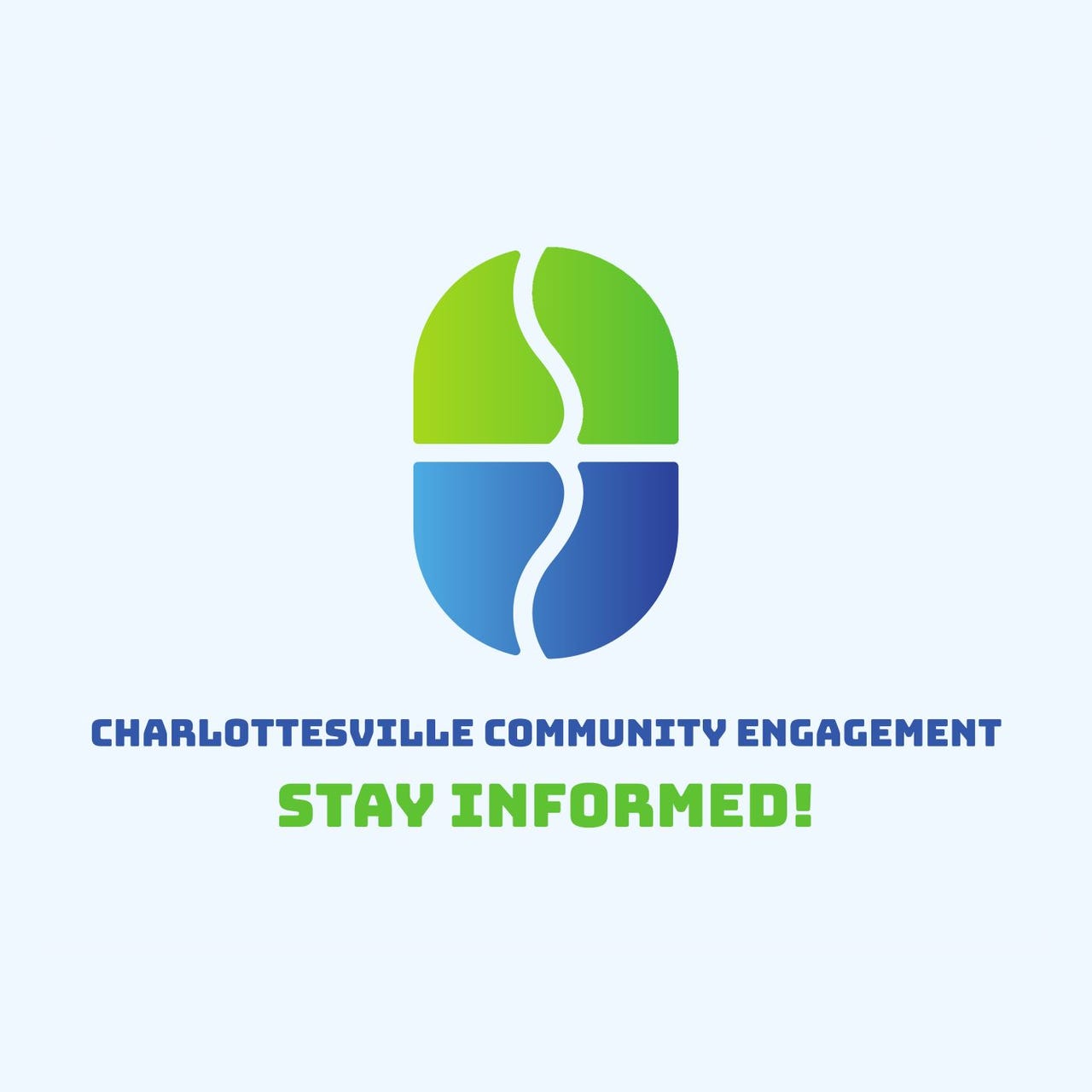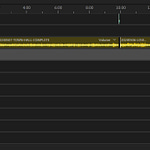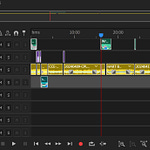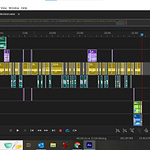Today is a day intended to celebrate one version of love, but there are many forms of devotion. This is the 636th edition of Charlottesville Community Engagement, a newsletter and podcast that seeks to provide as much information as possible about a particular region of the United States of America. I’m Sean Tubbs, and this love is what I got.
On today’s show:
One of Charlottesville’s Deputy City Managers is no longer with the city, and there are two other new top vacancies
The United States Department of Agriculture has released their latest count of all statistics related to farming, and the number of farms is down in Albemarle County
The Charlottesville Human Rights Commission is seeking your input on what area they should focus on next
New members join the Thomas Jefferson Planning District Commission and get an introduction to the organization
Charlottesville City Council adopts an Affordable Dwelling Unit manual despite some concerns
First shout out: Donations and volunteers wanted for JMRL Friends of the Library Book Sale
I’ve got a reasonable suspicion that anyone reading or listening to this newsletter or podcast are people who love to read and hopefully people who love libraries. One of you supports my work through a Substack subscription and a Patreon membership, which directs me to shout-out to the Friends of the Jefferson Madison Regional Library and specifically the upcoming Spring Sale.
The Spring Sale takes place this year from April 6 to April 14 with a preview on April 5 for members, with all of it taking place at 300 Albemarle Square in the old Northside Library. Do you have some old books you’d like to share with the community and support the library? Large boxes can be taken to the Gordon Avenue library during their opening hours and smaller ones can be taken to any branch library, except Downtown.
Or maybe you want to volunteer? Find out more information at jmrlfriends.org!
Lyons out as Charlottesville’s Deputy City Manager for Operations
The City of Charlottesville has posted an opening for Deputy City Manager for Operations just over a week after Lionel Lyons began work in the position.
“This position performs complex professional and administrative work in assisting the City Manager in a variety of assignments,” reads the summary for the position on governmentjobs.com.
On February 5, City Manager Sam Sanders had expressed how glad he was to have a full management team in place.
Afton Schneider, the city’s Director of Communications and Public Engagement, said Lyons had a family emergency and could not return to work.
As I reported on January 19, Lyons served in Petersburg for four years until 2021 and before that he was a senior executive assistant to the city manager of Phoenix, Arizona. He’s been a finalist for positions in Beaumont, Texas and Missouri City, Texas.
The salary range is between $175,011.20 and $205,171.20 a year.
Two other high-profile positions are also open, including a listing for the City Engineer posted on February 9. Jack Dawson has been in that position since January 2019. The salary range is between $98,550.40 and $123,448 a year.
Another top departure is Susan Moffett as director of social services. An open position was listed today and puts the job’s salary at between $120,744 and $161,699.20.

Agricultural census found 866 farms in Albemarle in 2022, down five percent from 2017
There were 3,340 fewer farms in Virginia in 2022 than in 2017 and 9,481 fewer farms than in 1997. That’s according to the latest five-year Census of Agriculture produced by the federal government.
“The agriculture census definition of a farm is any place from which $1,000 or more of agricultural products were produced and sold, or normally would have been sold, during the census year,” reads the introduction to the census which is produced by the National Agricultural Statistics Service.
The Census of Agriculture dates back to 1840 and is conducted for many reasons and one purpose is to allocate funds for farm programs and to inform agricultural programs. The records track a continued decline in the number of farms in Virginia and an increase of the land value for all farms. (view the data for Virginia)
In 1997 there were over 8.75 million acres considered to be farmland compared to 7.3 million acres in 2022. The average market value of land and buildings jumped from $384,979 in 1997 to $994,096 in 2022. The average size of a farm stayed relatively the same going from 177 acres to 187 acres.
In Albemarle, there were 866 farms in 2022, down from 913 in 2017. There were 167,583 acres in agricultural production in 2022. Of those, 628 farms have 42,417 acres classified as cropland and 551 of those farms harvested 34,279 acres.
The number of farms listed as having cropland actually increased from 540 in 2017, but more of that land was actually in production with 40,382 acres harvested in 2017.
Of those farms, 298 are classified as having cattle with an inventory of 18,134 cows with 10,069 of them listed as beef cows and only 232 of them listed as dairy. The rest are unclassified. In 2017, there were 411 farms with cattle in Albemarle.
There were 29 hog and pig farms in Albemarle in 2017, a number that dropped to 21 in 2022. The number of sheep farms increased from 59 to 70 with a corresponding increase of about 900 head for a total of 2,847 sheeple.
There are 200 horse farms with a total inventory of 1,639.
The average farm in Albemarle is losing money with an average net cash income per farm of a negative $16,033. There were 1,298 people employed as hired farm labor.
Here are some highlights from other counties:
There were 289 farms in Fluvanna County with a total of 49,499 acres with an average size of 171 acres. In 2017, there were 273 farms.
There were 187 farms in Greene County with a total of 30,811 acres with an average size of 165 acres. The number of farms is down from 214 in 2017.
There were 452 farms in Louisa County with a total of 86,660 acres in production. The average size is 192 acres. Like Fluvanna, there are more farms than in 2017 when 231 were recorded by the Census of Agriculture.
In Nelson County, there were 399 farms in 2022 with 68,566 acres considered agricultural. The average farm size is 172 acres. There were 409 farms in 2017.
Looking across the mountain, there were 1,460 acres in Augusta County with 243,974 acres in production. The average farm size is 167 acres. There were 1,665 farms in 2017.
There’s a lot in this document and anyone with an interest in agriculture should dig into the data. And let me and others know what you find!
Charlottesville’s Human Rights Commission seeks input
The appointed body created by Charlottesville City Council in 2013 to serve as “a strong advocate for justice and equal opportunity” is seeking information from the public about what it should do next.
“The Charlottesville Human Rights Commission (HRC) will be holding its Annual Planning Meeting in March,” reads a press release sent out earlier this week. “At this meeting, the HRC will select focus areas for its work in the coming year and identify steps to achieve its goals related to the selected focus areas.”
To influence the decision, the Office of Human Rights has put out an anonymous online survey to get feedback. The three question form first asks the respondents to pick from one of four pre-selected areas. The survey then asks for any other ideas.
The Human Rights Commission will discuss the annual planning meeting at its meeting on February 15 at 6:30 p.m. in CitySpace. (agenda packet)
According to a report in the packet, the Office of Human Rights has nine active complaints and a total of 51 unique individuals were served in 2023. The budget for the office has grown from $184,470 in FY20 to $487,553 in FY24. The increase this year is due to the hiring of two new full-time employees for the office, with those two positions created through the one-time use of federal funds according to the adopted FY24 budget.

New faces join the Thomas Jefferson Planning District Commission
A former member of the area’s regional planning body had encouraging words for four new people who joined late last week. In 2023, Dale Herring opted not to run for another term as a member of the Greene County Board of Supervisors.
“For me, one of the biggest honors I had being on the Board of Supervisors was serving on the Thomas Jefferson Planning District Commission,” Herring said. “The Commission is made up of individuals who believe in something greater than themselves, who work for a better tomorrow for all the local communities.”
Across Virginia, Planning District Commissions assist local governments with matters that cross jurisdictional boundaries.
“The PDC was created through the Regional Cooperation Act, all planning district commissions were,” said Christine Jacobs, the executive director of the TJPDC. “TJPDC specifically was created in 1972. There are 21 planning district commissions across the Commonwealth. All jurisdictions are members of planning district commissions.”
TJPDC has a 12-member board made up of appointed and elected officials. Four new people joined last week:
Albemarle Supervisor Michael Pruitt of the Scottsville District
Louisa Supervisor Manning Woodward of the Cuckoo District
Greene Supervisor Tim Goolsby of the Monroe District
Greene Planning Commissioner James Higgins
Jacobs told the Board that TJPDC is not a policy-making body and is instead intended to be a clearinghouse to share information.
“We really do facilitating and convening and problem-solving at a regional level but all decision making is still at the local level,” Jacobs said.
Jacobs said over the years, many initiatives of the TJPDC have gone on to become free standing institutions such as Jaunt, the Piedmont Housing Alliance, the Blue Ridge Area Coalition for the Homeless, the Central Virginia Partnership for Economic Development, and the Jefferson Area Board for Aging.
The budget for TJPDC comes from allocations from the state government, grant programming from state and federal sources, and local governments. The TJPDC can also get paid for specific projects.
“So for example, the Town of Mineral reached out to us for support on their Comprehensive Plan and we went under a [Memorandum of Understanding] and they contracted with us to do staff support,” Jacobs said.
I’ll have more from this February 8, 2024 meeting of the TJPDC in future editions of the newsletter.
Second shout out: RCA holding open house on February 15
In today’s first Patreon-fueled shout-out: Are you interested in learning more about the health of area waterways? Want to get some first-hand experience using science to evaluate water quality? Or perhaps you’d like to help keep rivers and streams clear of debris and trash?
If so, consider joining the Rivanna Conservation Alliance for a volunteer open house on Thursday, February 15th. Come by the RCA office on River Road anytime between 4 p.m. and 7 p.m. to learn about their programs and the many ways you can get involved. Staff members will be on hand to share information about their monitoring, restoration, education, and stewardship activities. New and current volunteers are welcome! Light refreshments will be provided. RSVPs are appreciated at rivannariver.org.
Charlottesville City Council adopts affordable dwelling unit manual
With Charlottesville’s new Development Code set to become effective in just a few days, the pieces of how it will be implemented are coming together. On February 5, City Council adopted two manuals that will help staff and members of the public figure out how to navigate the new landscape.
One of them is the Affordable Dwelling Unit Manual as explained by the person who will be responsible for monitoring and enforcing the new rules that will require units to be rented or sold below certain income levels. (view the draft manual as there’s no official version published online yet)
"It clarifies requirements and processes related to affordable dwelling units and offers guidance to internal staff and external stakeholders," said Antoine Williams, the city's housing program manager.
Council’s discussion and vote were split between a 4 p.m. work session and a regular agenda item several hours later.
In brief, any project outside of the three residential-only zones that has more than ten dwelling units must guarantee that ten percent be designated as affordable. Depending on the zoning district, property owners can get additional height if bonus levels of affordability are met.
To try to halt displacement, the Office of Community Solutions will employ a suite of programs called the Housing Equity and Anti-Displacement Toolkit, or HEAT. This is separate from the manual. (view the HEAT presentation)
“The emphasis with that is to concentrate several measures to be effective in areas of our communities, zones that have been identified as sensitive, or have unique vulnerabilities," Williams said.
There are seven measures in all including creation of a land bank program and waiving various fees. Another is the Charlottesville Affordable Housing Fund's grant program as well as the Charlottesville Supplemental Rental Assistance Program. Funding for the latter has recently been used by the Charlottesville Redevelopment and Housing Authority to purchase several properties across the city.
“This is a list of various program level conceptual items that the housing team is working on and what I asked them to do was to identify what are we already doing, what is currently in play, what could be expanded, what could be enhanced, what could with some attention being paid to it could we consider something else to,” said City Manager Sam Sanders.
Sanders said there is interest in a tax increment rebate program.
“We already do that but in a very small way so part of the work is to figure out how to bring back some sense of how to expand that, how to broaden that for use beyond just beyond the limited way that we’re doing it,” Sanders said.
According to the presentation, the land bank program will be targeted first in the Rose Hill neighborhood and the 10th and Page neighborhood. CAHF Grants will be prioritized for the Meadows neighborhood. The supplemental voucher program will be used in the Fifeville neighborhood, the Ridge Street neighborhood, and the Starr Hill neighborhood.
Meanwhile, the market moves on. On February 2, a four bedroom house in the 200 block of 10th Street NW built in 2006 sold for $625,000. The Piedmont Housing Alliance bought the property on August 14, 2000 for $55,750 and demolished the existing house as part of an initiative to build new housing in that neighborhood. The newly built unit sold for the first time in June 2006 for $345,000.
The manual was put together with significant input from the Housing Advisory Committee, which includes the directors of CRHA, the Piedmont Housing Alliance, and Habitat for Humanity. Each organization receives affordable housing funds from the city. City Councilor Michael Payne attended the two and a half hour meeting at which HAC members gave their final suggestions to the ADU manual.
“I think most of their recommendations have been incorporated into this and part of my approach to this document is that it is very much a living document,” Payne said. “It’s been amended to say that the numbers will be revisited at least annually and I think it’s just inevitable to see how the market responds as well as to what our staff capacity needs are.”
Some questions. Will the public be able to expect a report on whether public investments are having the desired effect? The Charlottesville Affordable Housing Fund has been in existence since 2007 but has only been audited a few times.
Housing Specialist Kathy McHugh told City Council in January 2016 that the city was not on track to meet the Comprehensive Plan goal of having 15 percent of the city’s total housing stock supported by subsidies. She presented data as I wrote about for Charlottesville Tomorrow at the time.
In April 2022, Sam Sanders presented Council with the results of an audit of the CAHF that broke down how $46.7 million in funding had been spent between 2010 and 2021. I wrote about that in this newsletter at the time.
McHugh left city government to pursue a different career. She was replaced by Stacy Pethia, who left the city to become Albemarle County’s housing coordinator and now assistant director of housing. Pethia was replaced by John Sales, who left in the summer of 2020 to become director of the Charlottesville Redevelopment and Housing Authority. The city was without a housing coordinator for nearly three years until Williams was hired.
But how will the manual be updated? The resolution to adopt the Affordable Dwelling Unit manual states that it is to be “subject to amendment” every two years. However, the city manager can make changes at any time in consultation with the city attorney. These are to be posted on the city’s website ten days before the changes take effect.
“We can remove extensive amounts of time spent on revisions,” said Alex Ikefuna, the director of the Office of Community Solutions. “However, if in the wisdom of the city manager and perhaps the city attorney they think that the proposed revision rises up to the consideration of the City Council, I think they have the option to make that decision.”
The Charlottesville Planning Commission did not review the document.
The adoption of the Affordable Dwelling Unit manual came after some further discussion later in the meeting.
City Councilor Michael Payne said he still had some concerns about some details.
“But I will say there’s time pressure to adopt this to align with the new code,” Payne said. “I think the things that have been brought up are very legitimate and I would like further discussion of them but recognizing that this is a living document, I feel comfortable passing this tonight.”
City Councilor Natalie Oschrin said she thought the Planning Commission should have reviewed the document. Ikefuna said they were not the correct venue.
“We channel everything that deals with housing to [the Housing Advisory Committee] and [the Housing Advisory Committee] makes a recommendation that goes to the City Council,” Ikefuna said.
The Development Code could not be implemented unless the manual was in place, which is why there was a need to approve it on February 5. Williams said reviews of projects are already underway, but at least one item will come back for review and that’s Figure 3 which lists the maximum monthly rents per income level.

During both the work session and the regular session, Councilor Lloyd Snook took issue with calculations that come up with the payment that would have to be paid by developers who choose to not build affordable units onsite.
“Intellectually it’s wrong,” Snook said. “Intellectually, this would be rejected by any scientific study committee, any thesis review committee. They’d tell you go back and run the experiment again. They would tell you that doesn’t make any sense or reconfigure what your criteria are to get something that fits, that makes a pattern. But under the circumstances if its going to lead to more… I hope that at some point maybe next year, somebody will redo the calculations and come up with something that is more intellectually defensible but if the practical effect is that its going to create more rental units, more affordable units being built on site, more power to ‘em.”
Council voted unanimously to adopt the manual but asked it expeditiously be revisited in the near future, meaning within two months. This story isn’t over and tomorrow I’ll have a story about the Development Process Manual.
Also waiting to be written:
Lankford Avenue rezoning
A letter requested an extension of the time projects could be considered under the old rules
A discussion about using surplus money to help close a revenue gap in the FY25 budget
Reading material:
Brick by Brick: an introduction to the Downtown Mall, Felicity Taylor, CBS19 News, February 12, 2024
Crozet park and ride promises to cut down on Charlottesville commutes, Jason Armesto, Charlottesville Daily Progress (paywall), February 13, 2024
French students visit Charlottesville High School, Brenna Kiefner, CBS19 News, February 13, 2024
Retail rebounds in Charlottesville as vacancy rates hit lowest level since before pandemic, Emily Hemphill, Charlottesville Daily Progress (paywall), February 13, 2024
636 is A Man! A Plan! A Canal! Panama!
Forgive me for being a little loopy at the end of this installment, but I find myself still with stories to tell from the February 5, 2024 City Council meeting. Today’s edition has a few non-Charlottesville stories to give myself a little break, but also to remind readers and listeners that while this is called Charlottesville Community Engagement, I see a bigger tapestry and it’s important to point out different threads from time to time.
Today I finally paid my membership dues to the Virginia Press Association, one of those errands I’ve been putting off. I’m able to do that and do things like pay for legal research because of the funding that comes through via subscriptions. Today I also had an exciting preliminary conversation about a new project that may yield help! Thanks to all supporters for getting me to here and for encouraging me to keep moving forward.
Ting will match your initial Substack subscription as part of a sponsorship, so that’s another great way that I can stay loopy and you stay in the loop!
And maybe you’re in the market for new Internet? Check out Ting to see what they have to offer, and if you decide to proceed, enter in the promo code COMMUNITY to receive:
Free installation
A second month for free
A $75 gift card to the Downtown Mall





















February 14, 2024: After one week, Lyons is out as Charlottesville's deputy city manager